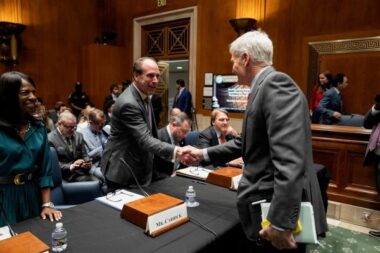MI to Senate: Strengthen the Federal Registered Apprenticeship Program

The federal Registered Apprenticeship program has the potential to help alleviate some of the manufacturing sector’s labor shortage—but it needs strengthening and streamlining to do so, Manufacturing Institute Chief Program Officer Gardner Carrick told the U.S. Senate Health, Education, Labor and Pensions Committee Wednesday.
What’s going on: “Registered Apprenticeship has an opportunity to play a significant role in the growth and scaling of the apprenticeship model in manufacturing,” Carrick said at the hearing “Registered Apprenticeship: Scaling the Workforce for the Future.” “But the program must be value-added.”
- In July, the MI—the NAM’s 501(c)3 workforce development and education affiliate—released “Manufacturing America’s Talent,” its workforce-system improvement roadmap that includes key recommendations for bettering the federal RA program framework.
FAME gives employers what they need: Apprenticeship works, Carrick said, pointing to the MI’s Federation for Advanced Manufacturing Education (FAME) program as evidence. FAME was started in 2010 by Toyota and is today fully run by the MI.
- But for the RA program to work as well—and help fill the many open manufacturing jobs, forecast to reach 3.8 million by 2033 if current trends continue—the federal government must provide flexibility to allow employers to tailor the program’s offerings to their real-world skill needs.
- The fact that just 15% of FAME participants are registered apprentices is evidence that the current system is not meeting needs, Carrick continued.
What should be done: The RA program “must be employer-led, offer a sensible balance between benefits and costs and support the infrastructure needs of our education partners to deliver the skills and competencies that manufacturers are actually asking for.”
What success looks like: Today, FAME works with nearly 500 companies in 45 locations across 17 states. Its graduates—highly skilled maintenance technicians—have a 95% full-time employment rate.
- One study shows that five years after finishing the program, FAME graduates were earning just under six figures annually, Carrick said.
- “In FAME, we achieve these levels of success because the model is employer-led, which means we teach the skills that employers actually demand.”
Read the whole thing: You can read Carrick’s full written testimony here.
